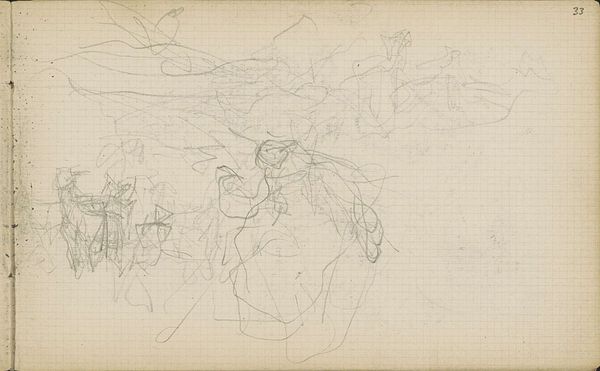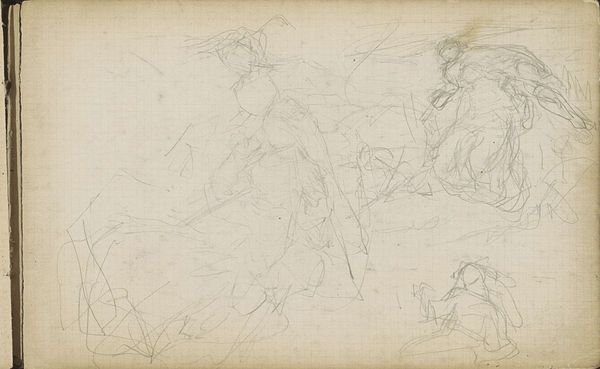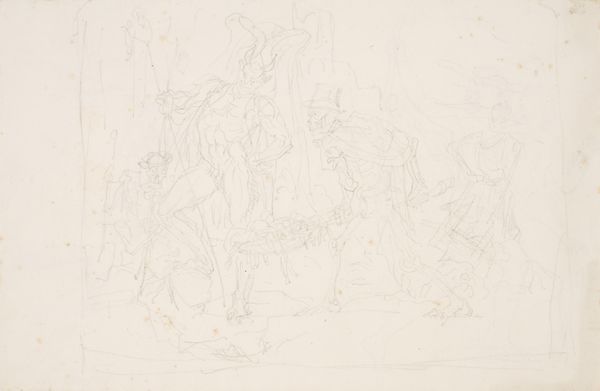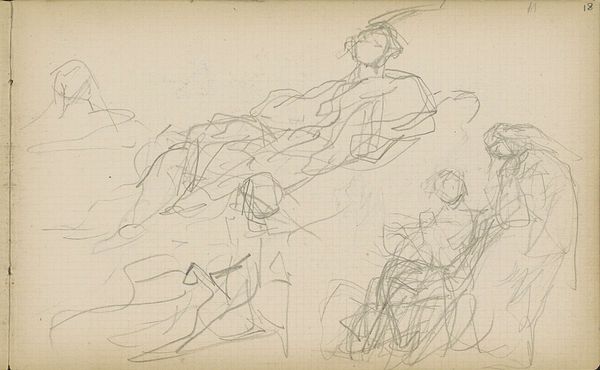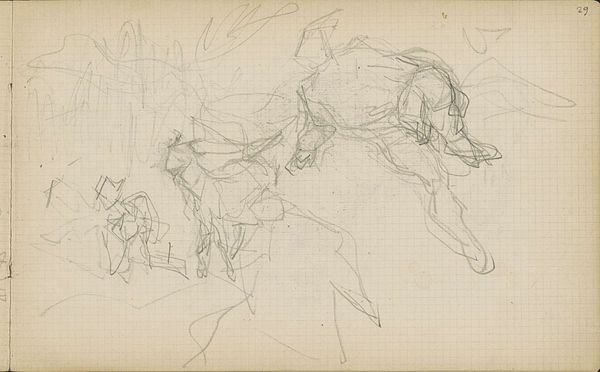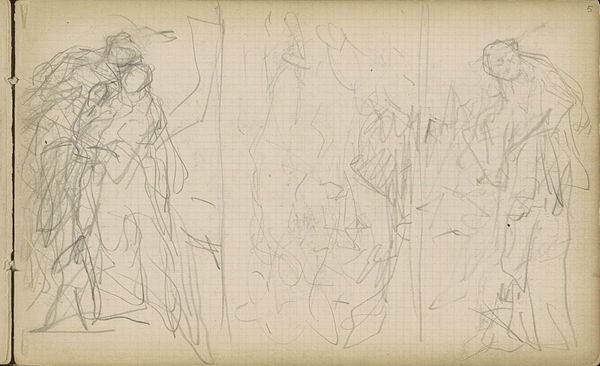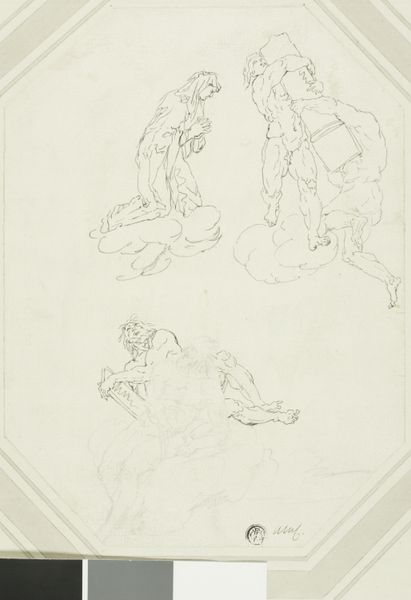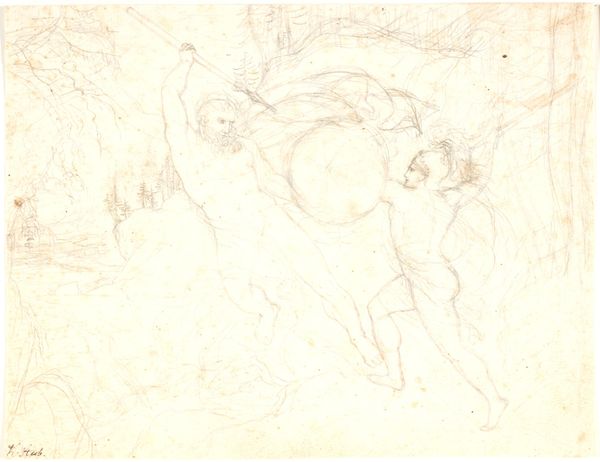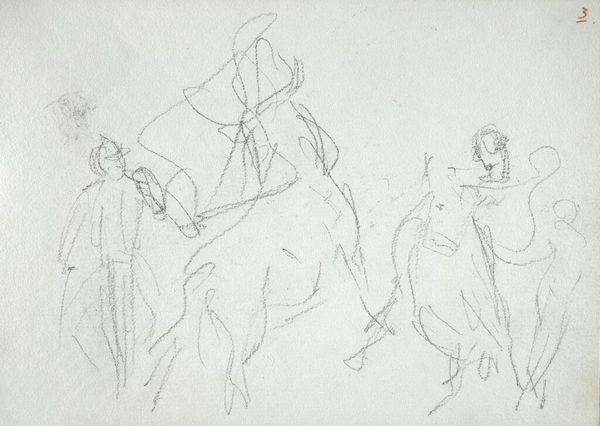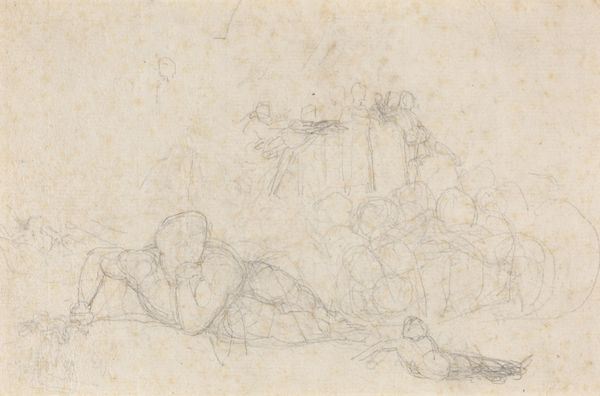
drawing, pencil
#
portrait
#
drawing
#
impressionism
#
pencil sketch
#
figuration
#
pencil
Copyright: Rijks Museum: Open Domain
Editor: This is "Vrouwen in lange gewaden," or "Women in Long Robes," a pencil drawing by Matthijs Maris, dating sometime between 1849 and 1917. The figures are ghostly, almost ephemeral, and the lines are so delicate. What do you see in this piece, especially considering the time it was made? Curator: I see a study of marginalized bodies. Maris was working during a period of significant social upheaval and nascent feminist movements. How might these veiled figures in long robes reflect the restrictive societal norms imposed on women, cloaking them, erasing their individual identities? Is Maris critiquing this? Editor: So, you're saying the obscured figures could be a deliberate commentary on the lack of agency women had at that time? Curator: Precisely. Consider the medium as well: a pencil sketch, so fleeting, so easily erased. This impermanence mirrors the precariousness of women’s positions within the societal structure. And think about who had access to art education and representation then – predominantly men. Whose gaze are we seeing, and is Maris subverting that? Editor: That makes me look at the drawing differently. I was initially drawn to the delicacy, but I see the potential for a powerful message now. Could the long robes be interpreted as a symbol of oppression, rather than just clothing? Curator: Exactly. Consider also how Maris uses line and form – loose, gestural – almost resisting a definitive depiction. Perhaps, he’s also questioning the very act of representation and who gets to be represented, pushing against a tradition that largely excluded women's narratives and perspectives. What does that imply about agency? Editor: I see what you mean. It's more than just a drawing of women; it's a statement about their place – or lack thereof – in society. Thank you; I've gained a completely new appreciation for this piece! Curator: My pleasure. Art, particularly from this period, offers us crucial insights into power dynamics, social expectations, and the fight for equality. Recognizing those subtle critiques helps us build a more just present and future.
Comments
No comments
Be the first to comment and join the conversation on the ultimate creative platform.
